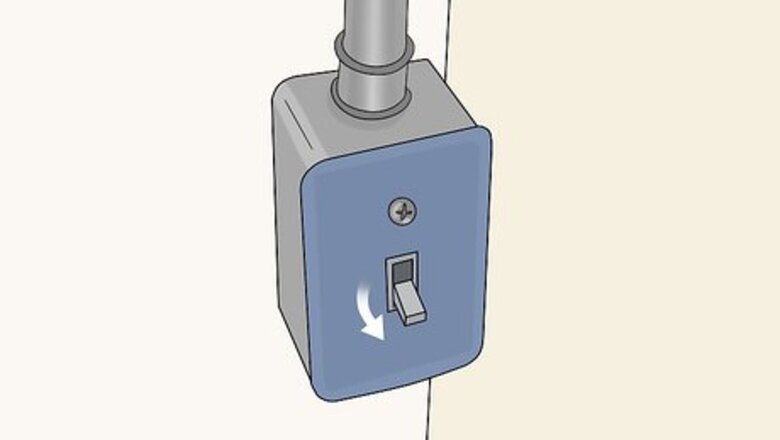
views
Cutting Power and Removing the Panel
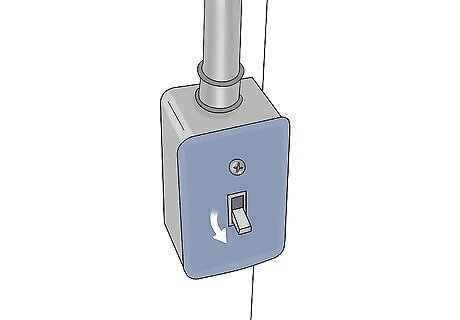
Flip the light switch on the side of your furnace. Almost every furnace has an electrical component. Even gas furnaces use electricity to power the fan and motor. Start by shutting off your furnace’s electrical components. Look on the exterior sides of your furnace for a light switch. Flip that switch to shut down power to the furnace’s fan and motor. Some really old furnaces won’t have a switch. If your furnace doesn’t have a switch, simply ignore this step and move on to turning off the breaker. The light switch will typically have a faceplate and an electrical box to house the wires, just like a regular outlet. If you flip the switch and your furnace kicks on, you were probably trying to troubleshoot the furnace when it was off!
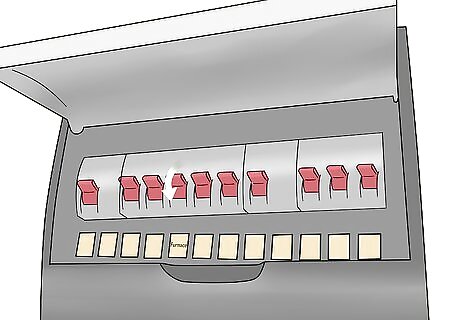
Turn the furnace’s breaker off by flipping the switch on your fuse box. Go to your building’s fuse box and find the room where your furnace is installed. Flip all of the switches for the room to the off position so that electricity for the room is shut off. This will ensure that all electrical inputs and background processes are off. If your fuse box is unlabeled, simply flip all of the breakers off. Other than the food in your refrigerator getting a little warm, you aren’t going to cause any damage by leaving the breakers off for a little bit.
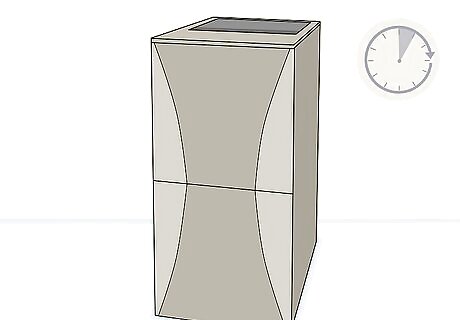
Wait 5 minutes for all electrical components to fully shut off. The computers in some older furnaces can be quite rudimentary. Wait at least 5 minutes to ensure that all of the electrical components have fully shut down. Some furnaces have a minimum time threshold for resetting the electrical settings, and waiting at least 5 minutes ensures that this threshold is met.
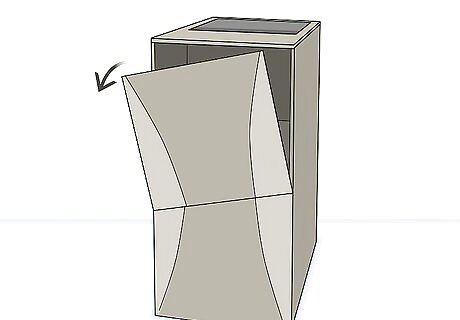
Open or slide the front panel off of your furnace. On the front of your furnace, there is a removable panel. With your furnace’s electrical components still off, remove the panel by either lifting it out of the slot, or pinching the slides on the panel inward and pulling it out. Some furnaces have 2 removable panels on the front that you’ll need to remove.Tip: To figure out which side of your furnace is the front, look for the brand name or company logo of the furnace’s manufacturer. Furnace companies always put their information on the front. To determine which panel is removable, look in the corners of each panel. One of the will be screwed or soldered into the body of the furnace. The other one can be removed.
Inspecting Your Unit
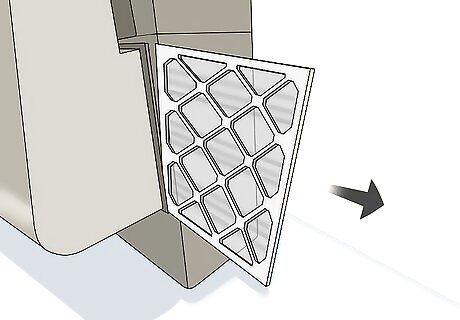
Pull out the air filter to see how dirty it is. While your furnace is off and the door is open, look for a flat cardboard or plastic frame that occupies a slot between the side, top, or bottom of your furnace and a vent. This is your filter. Pull it out and check the filter for excessive dirt. If necessary, you can replace or clean your furnace filter. If your filter has a cardboard frame, it is disposable. If it has a plastic frame, it is reusable. Clean a plastic filter with warm water and a clean cloth. Replace disposable filters by buying a filter that is the same size as the original and sliding it in. The dimensions for a disposable filter are always printed on the side of the frame. If you are troubleshooting a problem, a dirty or clogged filter is one of the most common causes for poor airflow or heat.
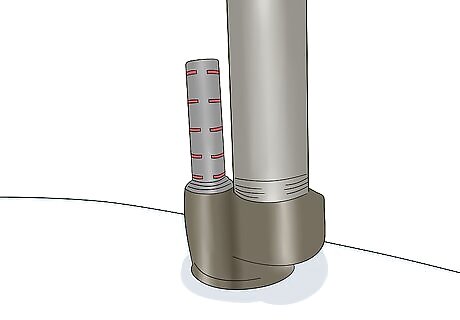
Read the oil tank’s gauge on an oil furnace to make sure that it’s filled. If you have an oil furnace, look at the top of your tank for a small glass or metal gauge with numbers on it. It is usually affixed to one of the pipe connections on top. This is the oil gauge. If the needle or line on the gauge is in the red, you need to refill the oil on your tank. To refill the tank, go outside to the access pipe and unscrew the cap on the top. Use a funnel to fill it with your specific brand of heating oil. This is typically a service that homeowners pay their heating company to perform for them, since you have to be in possession of a large amount of heating oil. In an emergency, you can use a few gallons of diesel fuel instead of oil to heat your home.
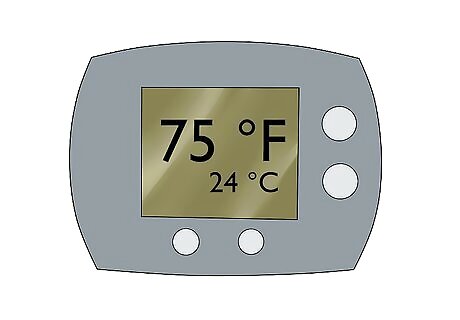
Set your thermostat to kick the heater on when it restarts. On your thermostat or control unit, turn the heat up so that the furnace will kick on when you restart it. In other words, if it is 70 °F (21 °C), set your thermostat to at least 75 °F (24 °C). If it is 80 °F (27 °C), set your thermostat to 85 °F (29 °C). This way you won’t have to worry about the temperature sensors on your thermostat interfering with your reboot. Make sure that your control unit is set to “heat,” and not “cool” or “auto.” If you set the temperature on your thermostat to turn the furnace on, it won’t do anything if it’s not turned to “heat.” You’ll have to do this after you turn the furnace back on if you have a digital control unit.

Make sure that your filter is secure and close the front panel. Once you’ve inspected the inside of the panel, check that the filter is securely in place before closing the front panel. Lift the panel up and fit it into its original position. Lock the panel if it has sliders by pulling them out once the panel is resting in place.Tip: Your furnace will not start if the panel is off. There is a safety switch on the side where your panel meets the frame of the furnace. The pressure from the panel keeps it pressed down, but when you remove the panel, it automatically pops and cuts power. Tape it down with a small piece of tape if you need to make repairs with the panel off when the power is on.
Rebooting the Furnace

Flip the furnace’s breaker back on. Start by flipping the breaker for your furnace’s room. Check the other light switches and appliances in your room to ensure that electricity is flowing to every part of the room. Wait 10-15 seconds. If you flipped the main breaker, ignore the room-specific breakers and just flip the main.
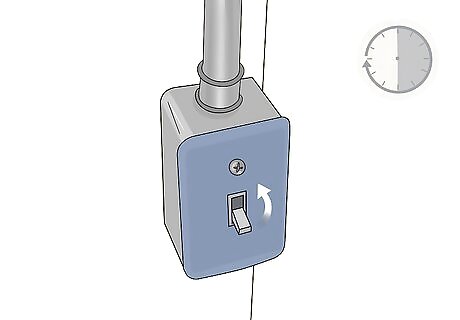
Turn the electricity to your furnace back on and wait 30-45 minutes. Once you’ve confirmed that the electricity in the room is working, flip the switch for the power on your furnace and wait 30-45 seconds for it to turn on. You should hear the motor and the fan kicking on in under a minute. The older a furnace is, the longer it may take for it to start. If your furnace doesn’t do anything, check the thermostat again to make sure that your furnace is getting accurate information from the control.
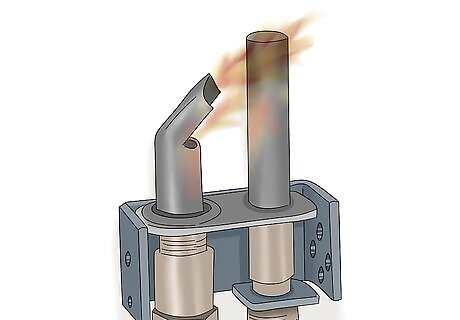
Find your pilot light if you have one to make sure that it is lit. Find your pilot light by looking for a metal tube running from your gas valve to the bottom of your furnace. Bend or lay down and inspect the end of the tube to see if there is a small flame coming out of it. If you don’t see a small flame emitting from the pipe, press the priming button on the gas valve or turn the dial to “pilot” and wait 20-45 seconds before lighting the end of the pipe with a long lighter or match.Warning: Do not relight your pilot light if you hear or smell gas coming out of the tube before you push the button to prime the gas. This may be an indication that the valve on your pilot light needs to be replaced, and requires a professional to analyze. The small button or dial next to the pilot light opens the valve to release a little gas. It takes a few seconds to get enough gas in the pipe to start the pilot light. Newer furnaces don’t have pilot lights. Tape down the safety switch temporarily if you need to keep the panel open to prime the furnace.
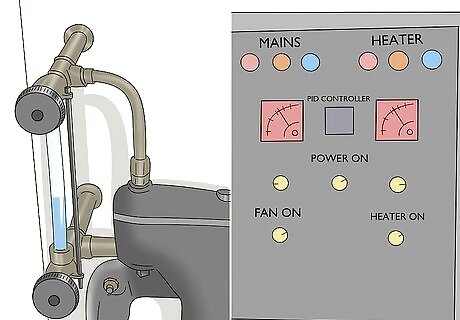
Check the diagnostic sight glass or control unit. On low-tech furnaces, there is a sight glass on the front of the furnace. This is a glass cover that is anywhere from 1–4 inches (2.5–10.2 cm) wide and allows you to look inside of your furnace to view the diagnostic light. On a newer furnace, there may be an electrical panel that gives readings. Inspect both of them once your furnace is running to make sure that the diagnostic reading is clear. On older furnaces, a steady green light is usually the diagnostic sign for all-clear. Newer control units will either read “ready,” “on,” or “clear.” On every furnace with a diagnostic unit, there is a piece of paper taped to the inside of your removable panel. This piece of paper contains the glossary for diagnostic codes. Use this sheet if you have a blinking light or non-green color showing on the diagnostic unit.

















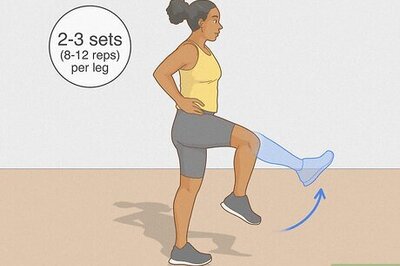


Comments
0 comment